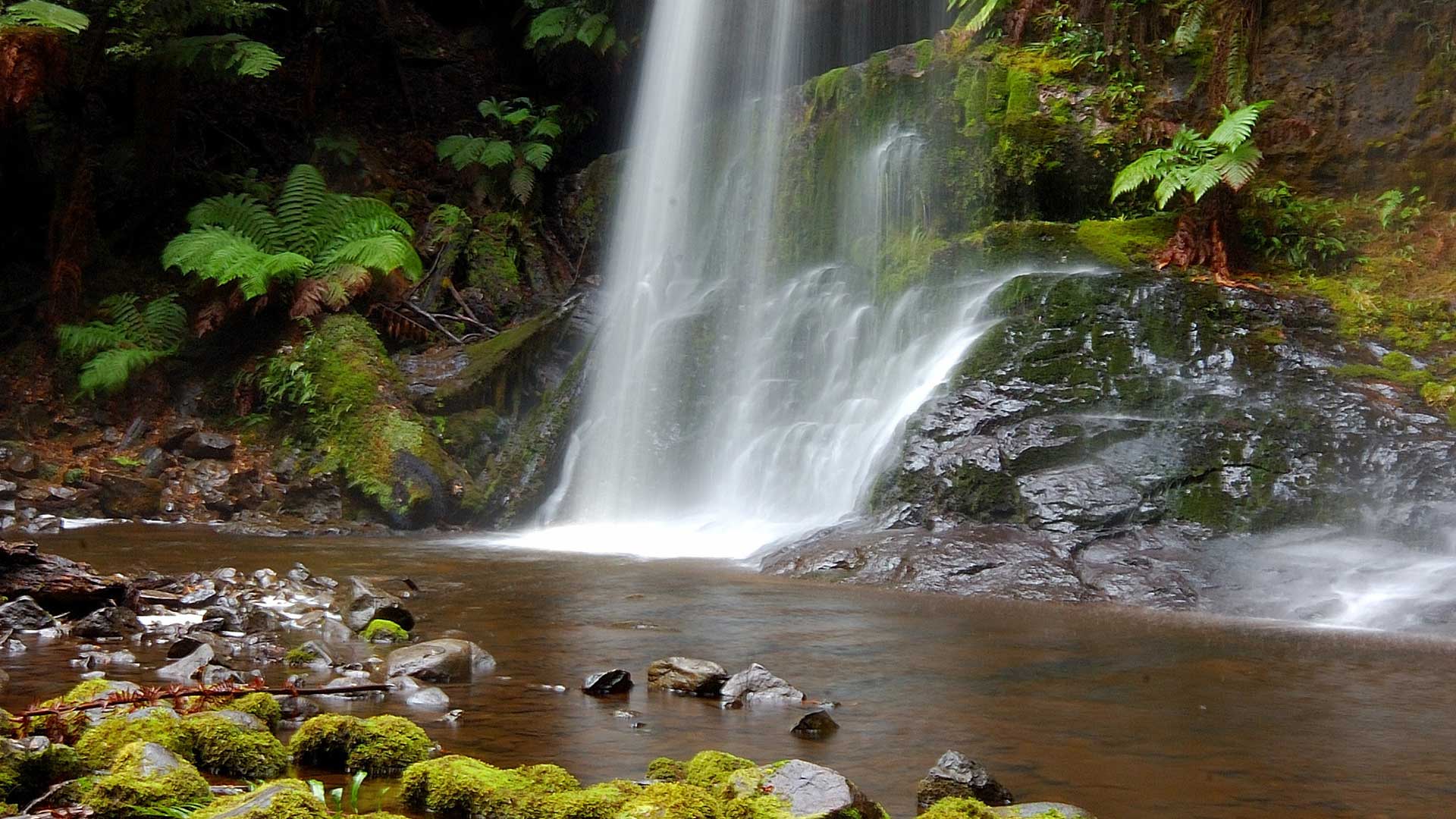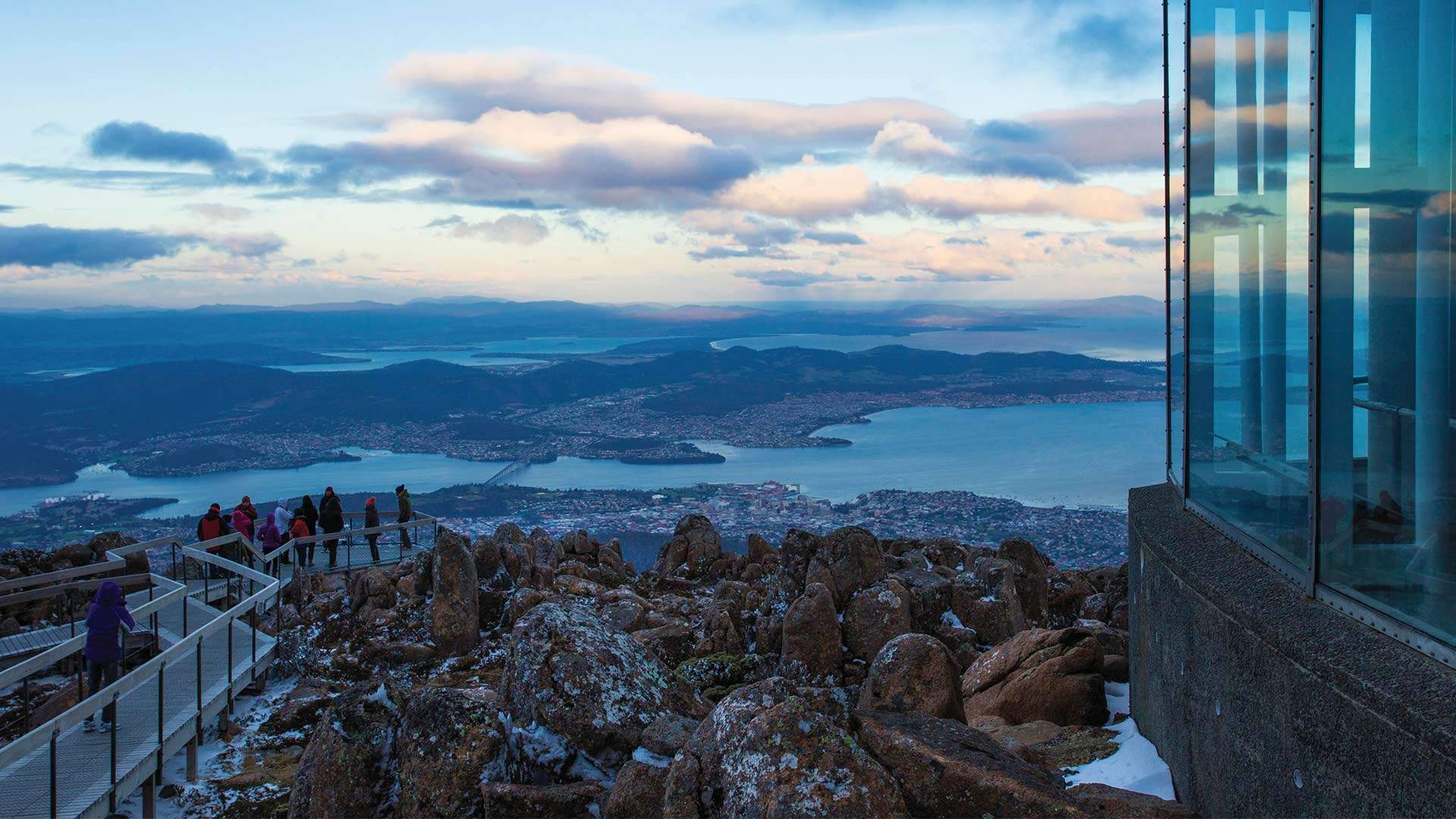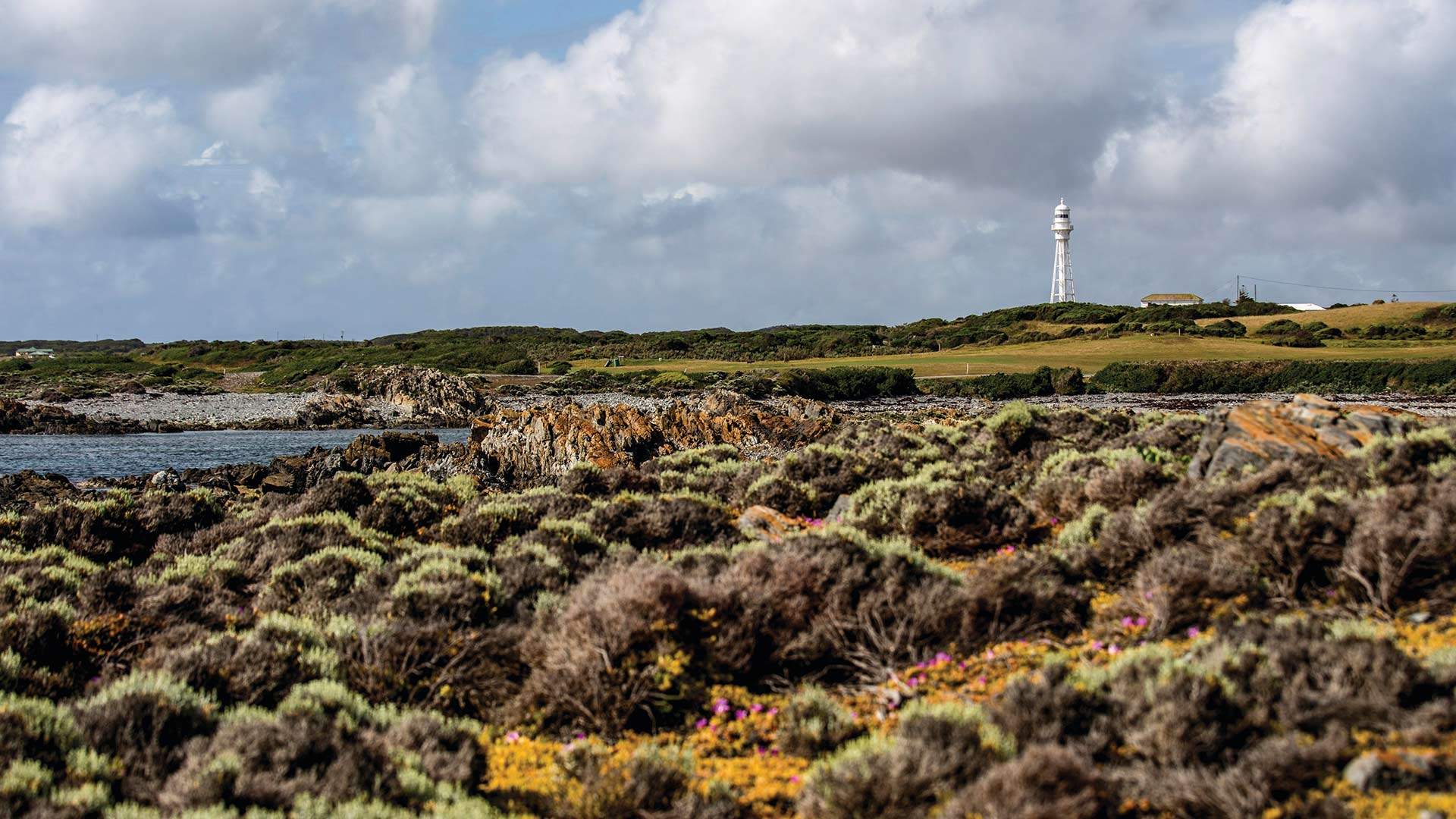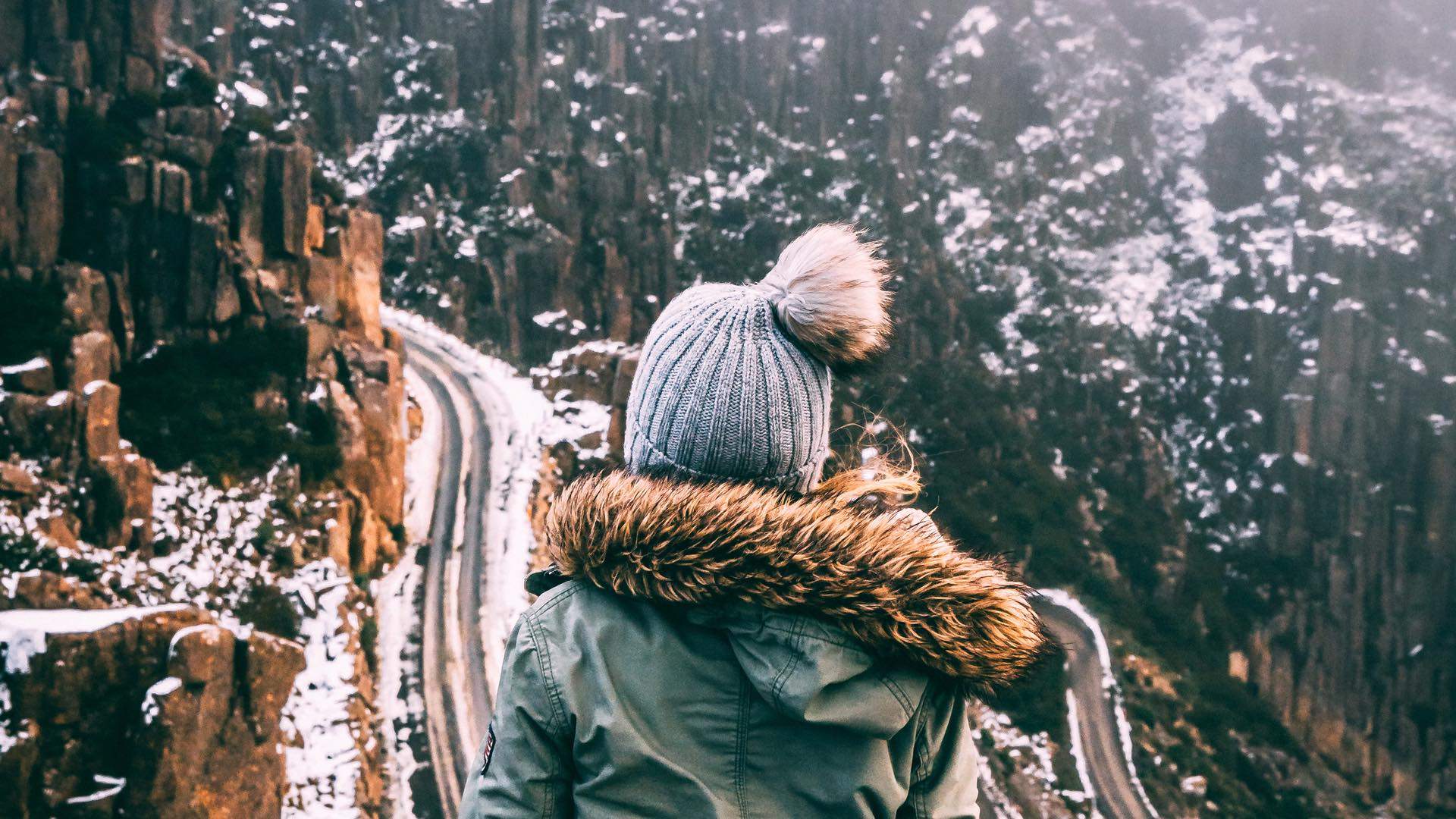Six Beautiful Sights in Tasmania and Why You'll Want to See Them in Winter
Discover the Apple Isle from multi-tiered waterfalls to glacial lakes and ancient rainforests.
In partnership with
Each year, thousands of travellers from near and far make their way down to the bottom of Australia to get a taste of gorgeous locations — the type that Tasmania just seems to have an endless supply of. And while it's nice to experience many of them under the sun, winter offers a whole new perspective that visitors will love just as much.
From wild ancient forests with awe-inspiring frozen lakes and waterfalls to rocky mountainsides that take on a thick coat of snow, Tasmania's landscape offers something that'll warm everyone's cockles. So, here are six beautiful sights that seem to get even better once the winter chill grabs hold of the scenery. Pack a beanie and scarf and start planning your wintry escape.


Russell Falls by Tourism Tasmania and Michael Walters Photography.
MOUNT FIELD NATIONAL PARK
Mount Field National Park is Tasmania's first and oldest national park, and many consider it to still be the best. If you're looking to get the most out of the Tasmanian winter, then this rugged landscape might just fulfil all your hopes and dreams.
Across this sprawling region, there are plenty of highlights to choose from. But don't look past Russell Falls and its alluring tiered cascades, which are widely considered the centrepiece of the entire park. Elsewhere, Lake Dobson's shimmering waterfront can be taken in from many a great nearby hike. And at just over 90 minutes from Hobart, Mount Mawson takes on a brilliant cover of snow that offers skiers and snowboarders a challenging but worthwhile experience — to get to the summit, you'll need to hike 30-minutes uphill through alpine forest then jump on a rope tow. We promise, it's worth it.

BEN LOMOND NATIONAL PARK
Located in Tasmania's northeast, Ben Lomond National Park towers above the landscape, reaching up an imposing 1500 metres. The rugged landscape features sharp cliff faces and sheer drops that make it appear almost insurmountable. But once winter arrives, the mountain comes to life with skiers making the most of the steep scenery — and the variety of exciting downhill skiing routes that come with it.
If you're not much of a skier, you can also drive up Jacobs Ladder, Ben Lomond's winding ascent, and experience the wonderful alpine plateau from its summit. Up here, you'll catch quite the surreal sight as you peer out upon the distant countryside — looking down on the rocky mountainside and its dramatic outcrops makes you feel completely mesmerised.

Cradle Mountain by Jason Charles Hill.
CRADLE MOUNTAIN
There's never a bad time to visit the famed Cradle Mountain, but winter is when this incredible spot truly comes into its own. Part of the Tasmanian Wilderness World Heritage Area, the mountain and its surrounds feature ancient rainforests and grasslands that sweep across its boundaries, as well as some remarkable glacial lakes and bubbling creeks that careen between the nearby mountaintops.
While exploring, keep your eyes peeled as the surrounding Cradle Mountain-Lake St Clair National Park is full of native wildlife, including wombats, echidnas, wallabies, quolls and pademelons. Don't forget about the low-lying lakes here either — in particular, Dove Lake, which is circled by an easy-to-access six-kilometre walking track. You might recognise it from photos (like the above) but, in real life, it's something else. As you wind your way around the lake, the trees get denser and the lookouts get quieter, and you'll feel like you've left the country for a European retreat. On a clear day you'll be able to see right across the lake; on a stormy one you'll be able to watch the sky do its thing. If you're lucky, you'll get to visit twice and see both.


Arthur River by Jess Bonde.
THE TARKINE
As the second largest cool-temperate rainforest in the world, The Tarkine should be at the top of the rugged adventurer's list. Set in Tasmania's northwest, the scenery here is largely varied and only becomes more extreme and breathtaking in the winter months. Start your adventure at the Edge of the World (actual name) and look out over the Arthur River — the water here is intense as it's where it meets the Southern Ocean. Or head inland and find shelter by venturing deep into the rainforest at the upper end of the river and discover the spectacular multi-tiered Philosopher Falls.


Mount Wellington lookout by Tourism Australia and Graham Freeman.
KUNANYI / MOUNT WELLINGTON PARK
Just a 20-minute drive from Hobart, kunanyi / Mount Wellington is probably the easiest way to immerse yourself in Tasmania's most beautiful sights. kunanyi /Mount Wellington Park showcases more than 18,000 hectares of remarkably picturesque scenery and links Hobart's outer reaches with world-class native bushland. You can drive right up to the Pinnacle, or take the challenge to walk to the summit. Do the whole 14 kilometres from Hobart — stopping at the Cascade Brewery along the way — or choose one of the smaller loop routes to conquer. On the way, you'll be able to enjoy sub-alpine flora and fauna that dots the towering landmass's upper reaches.
Winter is a particularly special time to visit as the mountaintop is often dusted in snow (making it prime for snowball fights). Afterwards, warm yourself up with something hot at the Lost Freight Cafe, a shipping container coffee spot halfway up the mountain at The Springs.


Currie Lighthouse on King Island by Andrew Wilson.
KING ISLAND
Set halfway between Tasmania and Victoria, King Island is a hidden gem. Which means you'll be able to nab the island's best (and most secluded) spots all to yourself. Currie is the island's main hotspot. Here you can explore the historic lighthouse built in the 1870s and wander the seaside town's quaint streets. It may be too cold to have a picnic outdoors, but you can do one indoors at the Boathouse. Described as a restaurant with no food, this stunning waterfront dining room if free for you to use as your own — you just have to bring your own nosh.
Step things up a notch and see King Island from one of the country's most impressive saunas at Porky Beach Retreat. You'll be able to look out over the beach, wine in-hand, from the warmest spot on the island. King Island is only accessible by plane — but with flights coming in from Melbourne multiple times a day, it's an easy and rewarding place to visit.

Top image: Cradle Mountain by Emilie Ristevski.







